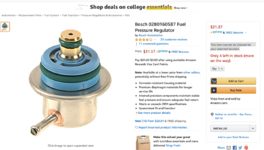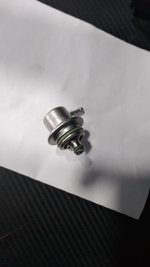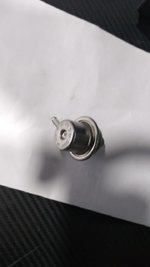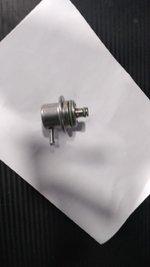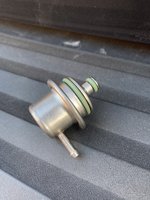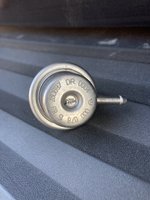Navigation
Install the app
How to install the app on iOS
Follow along with the video below to see how to install our site as a web app on your home screen.
Note: This feature may not be available in some browsers.
More options
Style variation
-
Hi Guest !
Welcome to the 500Eboard forum.
Since its founding in late 2008, 500Eboard has become the leading resource on the Internet for all things related to the Mercedes-Benz 500E and E500. In recent years, we have also expanded to include the 400E and E420 models, which are directly related to the 500E/E500.
We invite you to browse and take advantage of the information and resources here on the site. If you find helpful information, please register for full membership, and you'll find even more resources available. Feel free to ask questions, and make liberal use of the "Search" function to find answers.
We hope you will become an active contributor to the community!
Sincerely,
500Eboard Management
You are using an out of date browser. It may not display this or other websites correctly.
You should upgrade or use an alternative browser.
You should upgrade or use an alternative browser.
HOW-TO: Replacing M119 / M104 fuel pressure regulator
- Thread starter gerryvz
- Start date
FYI, while we're drifting off topic:....though I just noticed the windshield wash tank is leaking, so obviously it never ends...!
The washer tank leak MAY be the grommet, and as noted above get OE grommets only. The aftermarket grommets offer little if any savings, and are made of a distinctly different rubber compound.
However, I've also found that external leaks can be from the washer pump, not the grommet. If you only replace the grommet, don't fill the tank all the way up in case you need to take it apart again - less mess. The pumps can be bench-tested using a Mity-Vac that produces pressure, seal off the outlet and apply maybe 5psi pressure to the inlet, the pump should hold pressure with zero leakdown. If not, replace the pump(s). Or just replace them on principle after 25+ years. OE pumps are spendy though.
Another potential leak point is the hose attaching to the pump itself, especially the larger/heated hose, which is a PITA to repair. You can carefully trim back ~1/4" or so to get a non-swollen portion of hose which will seal better, while leaving the heating wires intact. Or replace the entire hose (not cheap, it's a 1-pc, fixed-length item). The hose for the headlight washers isn't heated and that hose is cheap & easy to replace if needed.

Mike, can you post a photo of the new vacuum connecting hose? I'm curious what it looks like installed compared to the original 2-piece setup. I'm curious if the original is a different p/n.I took Gerry's good advice and ordered the little vacuum connecting hose (117-078-02-81) as well, just in case. Interesting to note, the original hose on my engine was the two-part unit connected together by a little yellow joint just as shown in the video Lowman posted above (see e.g. 3:58)...the new part is a single L-shaped hose. I wonder why the change?
EDIT: I found this in the EPC, it's in Engine Group 14 (Intake manifold), under Vacuum system. Apparently the original setup is composed of 2 different pieces, 1 each 117-078-02-81 and 117-078-05-81, with the yellow connector 116-276-09-29 in between. There's also an EPC note that one of the vacuum fittings (-02-81) may require modification upon installation.
117-078-02-81 - 90° degree "L" shaped fitting (long, requires trimming for FPR use)
117-078-05-81 - 45° "V" shaped fitting

Mike, can you post a photo of the new vacuum connecting hose? I'm curious what it looks like installed compared to the original 2-piece setup. I'm curious if the original is a different p/n.
EDIT: I found this in the EPC, it's in Engine Group 14 (Intake manifold), under Vacuum system. Apparently the original setup is composed of 2 different pieces, 1 each 117-078-02-81 and 117-078-05-81, with the yellow connector 116-276-09-29 in between. There's also an EPC note that one of the vacuum fittings (-02-81) may require modification upon installation.
I believe that one of those numbers is a "short" ell, and the other a long one. All of the setups with the nozzle I've seen have had hoses of equal length, so maybe they expect you to trim the long one?
I keep a couple of both in my "drawer 'o' parts" as they're used all over the place. Same with keeping a roll of both rubber and hard plastic vacuum tubing. One of the first things that get replaced 100% when I get a new to me car.
Dan
Mike, can you post a photo of the new vacuum connecting hose? I'm curious what it looks like installed compared to the original 2-piece setup. I'm curious if the original is a different p/n.
EDIT: I found this in the EPC, it's in Engine Group 14 (Intake manifold), under Vacuum system. Apparently the original setup is composed of 2 different pieces, 1 each 117-078-02-81 and 117-078-05-81, with the yellow connector 116-276-09-29 in between. There's also an EPC note that one of the vacuum fittings (-02-81) may require modification upon installation.
117-078-02-81 - 90° degree "L" shaped fitting (long, requires trimming for FPR use)
117-078-05-81 - 45° "V" shaped fitting

Here are some pictures:
The top L-hose is the new one I received by ordering P/N 117-078-02-81 off Amazon at the same time I ordered the FPR itself; below that is the original two-hose-plus-yellow-connector setup that's been on my car I assume forever.
Length comparisons against a ruler. Eyeballing it, the new L-hose is 2.5 inches long while the original L-hose is about 1.75.
How the new, untrimmed L-hose looks installed alone without including the yellow connector in the system.
I'll go ahead and trim the new L-hose to the length of the original and install it with the yellow connector and V-hose as it was originally. The original V-hose is in fine shape, the rubber feels nice and pliant with no rotting, drying, or cracking, and the yellow connector is fine too, but the original L-hose is starting to go soft and sticky as the rubber degrades.
Thanks to all for pointing out the importance of that little yellow connector...I obviously would not have bothered to reuse it, but doing a little unscientific testing (i.e., blowing through both hose assemblies) there's no question that it does in fact function to restrict airflow through that line (albeit only slightly). I think Dan is clearly correct, it must be there for an engineered reason and so I'll put it back!
As for my windshield wash tank leak woes, I'm probably due for a complete refresh of that system since the tank and associated pumps are very possibly original on my car. As I said, it never ends....
Attachments
FYI... if you can clean the original tank, do so, and replace everything else (cap, lid, etc etc). The new tanks have an improperly-sized bottom that does not fit correctly in the chassis mounting hole. At least, it was wrong years ago and I don't recall MB ever fixing them! There is an old thread or two with photos.As for my windshield wash tank leak woes, I'm probably due for a complete refresh of that system since the tank and associated pumps are very possibly original on my car. As I said, it never ends....

Are you confident your gauge is accurate? If the fuel pressure is high, the ECU will adapt leaner to compensate, although it's limited how much it can adjust.Can the FPR cause too high fuel pressure?
Manual says pressure at idle should be 3.2-3.6, I'm at 4.1.
With vac line removed, should be 3.7-4.2. I'm at 4.6.

Are you confident your gauge is accurate? If the fuel pressure is high, the ECU will adapt leaner to compensate, although it's limited how much it can adjust.

I'm fairly confident. I've used it numerous times on our CIS-e cars and it seems to be accurate.
What does WDMS mean?
Beats me. I Googled it and "West Deptford Middle School" was the top result.What does WDMS mean?
Gerry?

Well, I've never been happier to find a bad part. I've been having trouble with warm starts. As suggested here, I replaced the fuel pressure regulator.
When I pulled the vacuum line off the FPR to start the replacement, gas came out! I was thrilled. Sure enough, new FPR in and now great warm starts. It's the little things.
When I pulled the vacuum line off the FPR to start the replacement, gas came out! I was thrilled. Sure enough, new FPR in and now great warm starts. It's the little things.
Indeed, good work.
It's a cheap "consumable" part (at least for the M104/M119) that should be replaced every 75-100K miles out of hand, if not before.
And like any consumable, it's inexpensive enough to keep one on the shelf, just like a crankshaft position sensor, especially of you have more than one M119 powered car in the garage.
Dan
...and that, folks, is how the hoarding begins.And like any consumable, it's inexpensive enough to keep one on the shelf, just like a crankshaft position sensor, especially of you have more than one M119 powered car in the garage.


And like any consumable, it's inexpensive enough to keep one on the shelf, just like a crankshaft position sensor, especially of you have more than one M119 powered car in the garage.
Dan
Agree. I keep two new FPRs on the shelf (as I have a 104 and 119) and 1-2 emergency used examples (made in Germany) in deep parts archive.
They do tend to go at odd intervals. They have been getting made in increasingly second- and now third-world countries in recent years.
...and that, folks, is how the hoarding begins.


That's not hoarding, it's maintaining spares.
My youngest son's W210 sedan borked in the drive through of a local Starbucks. I went up there with my SnapOn MTG2500, dumped the codes, then swapped out the CPS and had him back on the road within 30 minutes. Without that part on the shelf it the car would have been out of service for a day if not longer and I would have had to have it flat bedded home.
Dan
Time to relocate to a more MB-friendly location, Jlaa!I'm not sure why but for some reason, Amazon won't ship this to California. WTF?

There’s A LOT of things you can’t get in the Golden State ! *ahemRedBrakeCleanercough*
There are quite a number of things over the years that I've purchased from Amazon that I had to have shipped to Washington first, where, ahem, <I maintain a residence??!?!?!?>, and then brought?!?! to CA. But those things are a bit more esoteric in nature. A fuel pressure regulator? Argh!
Oh well... Rock Auto to the rescue. Rock Auto ended up being $2 cheaper than Amazon anyways, once I used the Rock Auto 5% promo code, which they always sneakily make very hard to use because you have to put the code in the "How Did You Hear About Us" box.....

Last edited:
Hello everybody,
This morning I replaced the fuel pressure regulator on my 1992 500e.
I looks like my hot start problems are solved, but I guess i need tot reset the LH module;
The engine (almost) stops now and then (with the old one it was running nice, except for the hotstarts).
Do I need special equipment for the reset or is there an easy way to do the reset ( other than driving for a 1000 miles, which, of course is a very nice idea...).
thanks for any advice,
greetz Michiel
This morning I replaced the fuel pressure regulator on my 1992 500e.
I looks like my hot start problems are solved, but I guess i need tot reset the LH module;
The engine (almost) stops now and then (with the old one it was running nice, except for the hotstarts).
Do I need special equipment for the reset or is there an easy way to do the reset ( other than driving for a 1000 miles, which, of course is a very nice idea...).
thanks for any advice,
greetz Michiel
hello, im planning to change the fpr of my car, i found it new here in my country but the part number is: 000-078-15-89
Is it ok to use this number instead of 000-078-18-89??
Thanks
Is it ok to use this number instead of 000-078-18-89??
Thanks
Attachments
Yes, that FPR is fine. It's Effbe brand, and it's all-metal construction. It's more expensive, but I actually think it may be better quality than the Bosch. In USA, 000-078-15-89 is $105 USD list, ~$80 discount (about twice the cost of aftermarket Bosch). Current Effbe FPR's are made in Czech Republic, older ones were made in Germany.hello, im planning to change the fpr of my car, i found it new here in my country but the part number is: 000-078-15-89
Is it ok to use this number instead of 000-078-18-89??
Thanks
Thank you so much gsxr, just bought it, and yes its Effbe brand as you described, going to install it following the how-to threadYes, that FPR is fine. It's Effbe brand, and it's all-metal construction. It's more expensive, but I actually think it may be better quality than the Bosch. In USA, 000-078-15-89 is $105 USD list, ~$80 discount (about twice the cost of aftermarket Bosch). Current Effbe FPR's are made in Czech Republic, older ones were made in Germany.
Attachments
Thank you @gerryvz , thank you @gsxr for every so valuable thread! I ended up with the Bosch from FCP
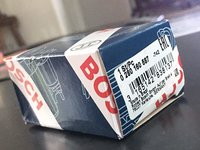
Old one is out
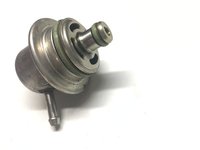
New one is in
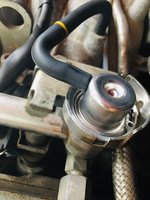
Need to do a little detailing under the aircleaner box for sure!
btw, this brought back memories... When I first bought this car, all the vacuum lines were allover the place from few local mechanics (here original owner took the car to solve the poor running issues - never did). Look at this "interesting" T-fitting at the FPR
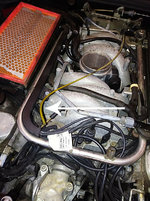
Needless to say, I've replaced every single line and elbow, placing them where they belong from the factory...
Just did that as well, feeling good, off to do some driving! Thanks again to all HOW-TOs!
Regards,
D

Old one is out

New one is in

Need to do a little detailing under the aircleaner box for sure!
btw, this brought back memories... When I first bought this car, all the vacuum lines were allover the place from few local mechanics (here original owner took the car to solve the poor running issues - never did). Look at this "interesting" T-fitting at the FPR


Needless to say, I've replaced every single line and elbow, placing them where they belong from the factory...
To reset LH adaptation without HHT/SDS, use a blink-code reader and "clear" the single-blink which indicates no codes. This will reset adaptation to mean values (1.000x).

Just did that as well, feeling good, off to do some driving! Thanks again to all HOW-TOs!
Regards,
D
Hi Everyone,
Has anyone experienced an idle problem related to a stuck Fuel pressure regulator? what kind of symptoms?
I have an idle issue on the C36 (M104) in which the ECU thinks there is a rich condition at idle, starts reducing injection duration till the car idles lean and rough!
If I reset the ECU Adaptations, the car runs super smooth and even sounds better. But once its in closed loop again it detects this false rich condition and reduces fuel.
Its definitely a false rich, at the last inspection the car ran 1.03 (Lean), low fuel consumption and car even sounds lean.
New O2 sensor (same values before and after)
New ignition parts
Rebuild set of injectors (old set had fuel on the nozzle tips when I removed them)
What I noticed is that the false rich condition occurs when I blip the throttle. Another observation is sometimes the fuel pressure increases when I shut off the engine, the increase is significant and continues to climb. While in other times, the pressure is low after.
Let me know your thoughts on this
Thanks in Advance.
Has anyone experienced an idle problem related to a stuck Fuel pressure regulator? what kind of symptoms?
I have an idle issue on the C36 (M104) in which the ECU thinks there is a rich condition at idle, starts reducing injection duration till the car idles lean and rough!
If I reset the ECU Adaptations, the car runs super smooth and even sounds better. But once its in closed loop again it detects this false rich condition and reduces fuel.
Its definitely a false rich, at the last inspection the car ran 1.03 (Lean), low fuel consumption and car even sounds lean.
New O2 sensor (same values before and after)
New ignition parts
Rebuild set of injectors (old set had fuel on the nozzle tips when I removed them)
What I noticed is that the false rich condition occurs when I blip the throttle. Another observation is sometimes the fuel pressure increases when I shut off the engine, the increase is significant and continues to climb. While in other times, the pressure is low after.
Let me know your thoughts on this
Thanks in Advance.
Thought I’d add my fuel pressure regulator symptoms and fix.
1994 E500 130K miles. For the past 6 months or so I would occasionally have a no start condition on a hot engine after sitting for about 15 to 20 minutes. Engine would crank, just wouldn’t fire and run. Cranking usually resulted in a few backfires. After letting it sit for about 30 minutes, it would start and run normally. I originally thought fuel pumps So I replaced them. Problem still present. Recently, problem became 100% predictable. Crank but no start after hot engine sitting 15-20 minutes. Successful start and normal run after cooling for about 30 minutes. Replaced fuel pressure regulator and problem fixed. Prior to replacing the fuel pressure regulator there were no codes to indicate fuel pressure problem, and checking pressures with gauge on fuel rail did not reveal out of spec conditions.
Hope this is helpful to someone else chasing this same problem.
1994 E500 130K miles. For the past 6 months or so I would occasionally have a no start condition on a hot engine after sitting for about 15 to 20 minutes. Engine would crank, just wouldn’t fire and run. Cranking usually resulted in a few backfires. After letting it sit for about 30 minutes, it would start and run normally. I originally thought fuel pumps So I replaced them. Problem still present. Recently, problem became 100% predictable. Crank but no start after hot engine sitting 15-20 minutes. Successful start and normal run after cooling for about 30 minutes. Replaced fuel pressure regulator and problem fixed. Prior to replacing the fuel pressure regulator there were no codes to indicate fuel pressure problem, and checking pressures with gauge on fuel rail did not reveal out of spec conditions.
Hope this is helpful to someone else chasing this same problem.
Interesting Thanks @J. M. van Swaay ! Was the original part German?Thought I’d add my fuel pressure regulator symptoms and fix.
1994 E500 130K miles. For the past 6 months or so I would occasionally have a no start condition on a hot engine after sitting for about 15 to 20 minutes. Engine would crank, just wouldn’t fire and run. Cranking usually resulted in a few backfires. After letting it sit for about 30 minutes, it would start and run normally. I originally thought fuel pumps So I replaced them. Problem still present. Recently, problem became 100% predictable. Crank but no start after hot engine sitting 15-20 minutes. Successful start and normal run after cooling for about 30 minutes. Replaced fuel pressure regulator and problem fixed. Prior to replacing the fuel pressure regulator there were no codes to indicate fuel pressure problem, and checking pressures with gauge on fuel rail did not reveal out of spec conditions.
Hope this is helpful to someone else chasing this same problem.
And was your replacement part a Bosch part made in Brazil? Just wondering.
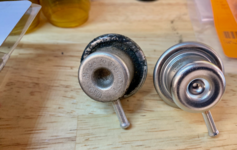

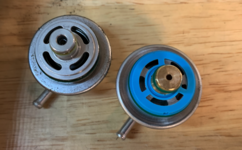
Same thing here! Replacement one I got was Made in Brazil and it fixed my problems too.Interesting Thanks @J. M. van Swaay ! Was the original part German?
And was your replacement part a Bosch part made in Brazil? Just wondering.
View attachment 151663
View attachment 151664
View attachment 151665
To my knowledge, the regulator I replaced was the original. I had a used but serviceable one in my parts stash, not sure of the manufacturer.
I thinks its NLA in Europe, could not find one.See post #83 for a Czech alternative to the Brazilian. Seems there are no German options anymore.

The original German Effbe is NLA, but the replacement Czech Effbe (with -64 suffix) should still be available:I thinks its NLA in Europe, could not find one.
https://partssearch.mercedes-benz-classic.com/parts/A000078158964?tt=automatic, manual
https://parts.mbofcovington.com/oem-parts/mercedes-benz-pressure-regulator-000078158964

Aha its only available as OE. I bought a Bosch unit for the C36, no issues with it. I gave up on the "Made in Germany" thing when I saw the new $12k AMG wheel are made in TW, while BBS is just 40km away from M-B HQ.The original German Effbe is NLA, but the replacement Czech Effbe (with -64 suffix) should still be available:
https://partssearch.mercedes-benz-classic.com/parts/A000078158964?tt=automatic, manual
https://parts.mbofcovington.com/oem-parts/mercedes-benz-pressure-regulator-000078158964
Correct - the Effbe is only available as OE / Genuine. I didn't like how the newer Bosch had a smaller center orifice vs the old Bosch, and the Effbes appear to be more similar to the old Bosch. Not that I've heard a single report of problems with the newer Bosch, so it isn't necessarily worth paying double for the Effbe (but, I think it may have slightly higher pressure rating similar to old Bosch, if you care about that).Aha its only available as OE. I bought a Bosch unit for the C36, no issues with it. I gave up on the "Made in Germany" thing when I saw the new $12k AMG wheel are made in TW, while BBS is just 40km away from M-B HQ.

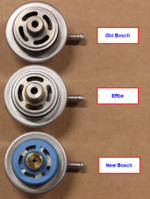
Very helpful. Just changed my fuel pressure regulator last night. Exact issue. problem with cold start. Original nearly 30 year old part finally failed. Think about that though? took 30 years for this part to fail PEAK Benz quality era!GSXR edit: Click here for "How to" writeup on checking pressures.
One issue that pops up from time to time with the M119 (LH injection) and M104 (HFM injection) is the weakening and/or failure of the fuel pressure regulator. This is located in-line on the fuel rail and is a round, silver unit about the diameter of an old-school US "silver dollar" (I realize that most of you under the age of 40 have probably never seen said coin).
The FPR has a spring and a diaphragm inside of it, along with a manifold vacuum connection on the outside. The FPR is controlled by the vacuum input and regulates the pressure in the rail (to the injectors) and also the fuel that is returned back to the fuel tank while the car is operating. Thus, it's a very important component in the fuel delivery system. Over time, the internal spring can weaken, or the diaphragm can leak, causing leakdown of the fuel system's pressure -- particularly overnight.
The main symptoms of a bad FPR are difficulty on a cold start, particularly if the car has sat for more than a full day or two. It can generally be overcome by cranking the motor until it catches, but this can sometimes take 10-15 seconds. In addition, the process of doing this tends to dump a lot of fuel into the engine. You will know this by the "sulferous" smell coming out of your exhaust. Of course, a rich mixture like this is NOT good for the catalytic converter(s).
If you are experiencing difficult cold starts in the morning (hot starts are not a problem), there is one simple, additional test you should perform to diagnose a bad FPR. You should remove the manifold vacuum line from the connection (pull off the rubber connector) and smell the end of the vacuum line and the FPR nipple for gasoline. If you smell gas, it's another good sign that the internal diaphragm in the FPR is leaking, and that the FPR should be replaced.
The M119 and the M104 take the same fuel pressure regulator part. The Mercedes part number is 000-078-18-89. This part is manufactured by Bosch and is available as an aftermarket Bosch yellow-boxed part, through firms like AutohausAZ.com. The Bosch part number is 0-280-160-587. The MB list price on the FPR is currently $174; you can purchase the FPR from AutohausAZ (Bosch yellow box) for around $42; or the MB-branded part from parts.com for $124.80. So, it's generally a no-brainer as to where to get it.
At one point, MB issued a technical bulletin about the FPR, and issued an updated, replacement part (the above part number). The original part number (which is very likely still installed on your car) is 000 078 14 89. it is a good idea to proactively replace your FPR with the updated part.
Tools needed for the job include:
- a pair of snap-ring pliers
- a small, flat-blade screwdriver
- a shop rag (to catch any stray gasoline)
SAFETY FIRST: It's a good idea to do this job first thing in the morning, with a cold engine and after the fuel system pressure has leaked down a bit. Since you'll be working around live fuel, be sure to have rags handy and take all of the normal precautions you would take when working around petrol. Having a shop fire extinguisher handy is not a bad idea; rauchen verboten, etc. You know the drill.
Basically the steps to the job are as follows:
[GSXR edit: Before proceeding with the steps below, remove the gas cap on the fuel tank, to release pressure in the tank. If possible, perform the work below with 1/2 tank or less, or at least not a full tank (except wagons, which have the tank underneath the chassis). This will prevent fuel from gravity-feeding to the rail when the FPR is removed.]
Hope this helps!
- Locate FPR on fuel rail. On the M104 this is front and center on the engine. On the M119 it will require removal of the airbox.
- Remove circular locking ring with snap-ring pliers and set aside.
- CAREFULLY pry FPR out of metal housing. You can insert the small flat-blade screwdriver into one of the notches on the side of the FPR housing to get it under the lip of the FPR, and then gently pry upward. It should come up wlth little difficulty.
- Have a rag handy in case any drops of gas spray out of the FPR housing. You may see a few drops but it shouldn't be much, unless you recently drove the car and the fuel system is pressurized.
- Slowly lift the loosened FPR out of the housing.
- If you see any dirt or grime in the FPR's seating area around the rim of the housing, take a rag soaked in gasoline or brake cleaner and CAREFULLY clean with the corner of the rag. DO NOT let any dirt or debris fall into the FPR housing.
- Once the FPR is cleaned, place the new FPR into the housing.
- Press down on the new FPR with the heel of your hand to seat it well down into the housing.
- Replace the snap ring by compressing it with the pliers and then inserting it back into the groove in the FPR housing.
- Use the tip of the small flat-blade screwdriver to ensure that the snap-ring is properly seated all the way around the housing.
- Start the car and test for leaks or issues.
- Have a nice, ice-cold morning beer.
Cheers,
Gerry
helpful pics! thanks.Correct - the Effbe is only available as OE / Genuine. I didn't like how the newer Bosch had a smaller center orifice vs the old Bosch, and the Effbes appear to be more similar to the old Bosch. Not that I've heard a single report of problems with the newer Bosch, so it isn't necessarily worth paying double for the Effbe (but, I think it may have slightly higher pressure rating similar to old Bosch, if you care about that).
do you think new aftermarket fuel pressure regulator is as good as bosch?
The only aftermarket I'd use is Bosch, and to date I've not heard of any problems with those. If cost isn't an issue I'd probably use the OE Effbe mentioned back in post #83.helpful pics! thanks.
do you think new aftermarket fuel pressure regulator is as good as bosch?

Similar threads
- Replies
- 20
- Views
- 1,027
- Replies
- 3
- Views
- 214
- Replies
- 17
- Views
- 4,914
- Replies
- 12
- Views
- 1,525
Similar threads
- Replies
- 3
- Views
- 214
- Replies
- 12
- Views
- 1,525
- Sticky
- Replies
- 55
- Views
- 15,578
- Replies
- 17
- Views
- 3,826



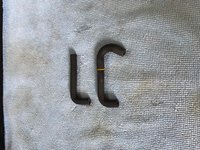
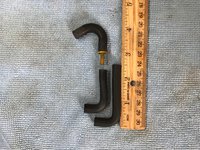
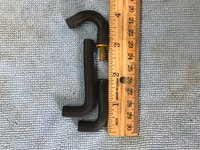
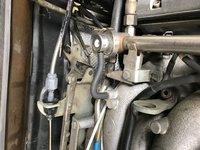
 I know I know
I know I know
